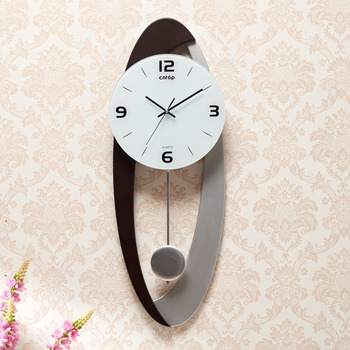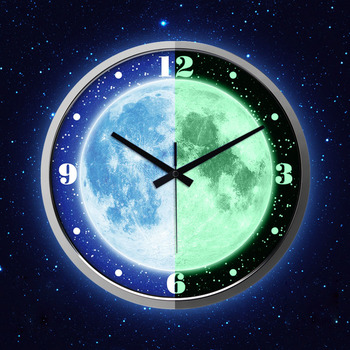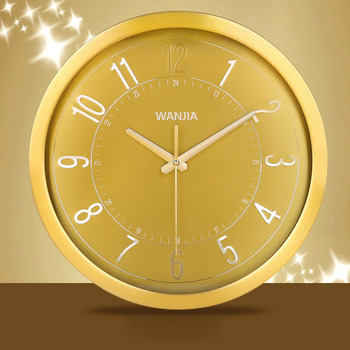Wall Clock Info
Wall Clocks Encyclopedia
Introduction of Wall Clock
Wall clocks were first evolved from the tower bells. Around the 16th century, there was a huge volume of tower clocks in Europe. Due to the manufacturing technology at that time, the clocks and watches were usually larger in size. With the development of technology, there was a breakthrough of Japanese quartz clock technology and its application in clocks in the middle of the 20th century. The wall clock (HomeRises) is a kind of timing machine suspended on the surface of the hall and room. In fact, from the perspective of geomancy, it can also attract wealth to a certain extent, avoid evil spirits, and help the host to get lucky. It is indeed a good geomancy accessory.
Wall Clock Structure
The Basic Structure of a Wall Clock:
- Front Shell (also called front cover): Surface treatment methods include; direct injection of mounding color, spray painting, electroplating, coating (also called transfer printing), iron printing, etc.
- Back Shell (also called back cover): Made of plastic, resin, wood, glass, metal.
- Battery Cover: The general material is plastic.
- Mirror Surface: Made of glass and plastic, of which the wall clock is basically glass, while
the desk clock has both. - Clock Face (also called literally) : Made of paper, PVC (a kind of metal). The scales, characters and patterns on them are all printed on silk.
- Clock Hand(also called a pointer): Made of plastic and metal, of which the wall clock is basically metal, while the desk clock has both.
- Clock Mechanism:
- The operating mode of the second hand is divided into: the skip – second movement and the sweep – second movement (also known as the silent movement).
- Wall clock core is divided into: Single – running core and music full – point clock core (also known as point core)
- The clock core is divided into: Single machine and alarm, of which the alarm is further divided into a single alarm core and a snoozing function of the alarm.The noise of the alarm is divided into a single BB sound and four BB sound(that is, from weak to strong BB sound).
- Screws.
- LCD (liquid crystal display) Components: If there is only one LCD component on a clock, the display content is generally calendar (i.e. calendar year, month, day, week) and temperature. A clock has two LCD components, one of which shows the calendar, and the other shows temperature and humidity.
- Swing Core (auxiliary core) : It is divided into two parts, the horizontal and rotary core.
How to Choose a Wall Clock
Wall Clocks Shopping Guide:
Usually, we have a clock in the living room. It does not only play the role of decorating the home, but also a necessary tool to master time. But now the clock has developed a lot of brands and types, variety of styles. Different types of wall clocks placed in the home, will definitely produce different effects.
1. Special attention should be paid to coordination of room style, lighting and personal preferences when purchasing the wall clock. Generally speaking, we must first determine the style of the wall clock to choose from. Is it simple or colorful, is it avant-garde or retro, is it round or square, or the design of the opposite sex. Try to choose some decorative effective pictures wall clock. This will have a more straightforward sense of the actual decoration of the wall clock. It is advisable to choose a wall clock with a diameter of 34cm or more. On the other hand, a 30cm diameter is more appropriate.
2. The wall clock is a special kind of online shopping product, so to speak. Because first of all, it is fragile and not all businesses have the strength to package a wall clock. So choosing a business with a higher reputation and strength can increase the wall clock’s transportation risk.
3. It is a product that doesn’t immediately tell its quality, It takes a period of observation before a conclusion can be reached. It is for this reason that the quality of the wall clock is particularly important. The quality of the clock covers material and workmanship (border grinding, surface printing, molding process, etc.)And the core. The most important of these is the core. About the choice of core, "what kind of core is the most preferable?" it is discussed in detail. Here we recommend the solar cell made in Taiwan, the Japanese precision machine core; several domestic brands of cores are also good. The reason is very simple, cost-effective is best and it is effective for 30 years. The average Internet price for mid-range and high-end wall clock is between $80 and $400. The cost of a good core is very high.
Even a faulty clock can normally run for about a month after the buyer receives the goods. Many ordinary clocks use low-quality core that can run normally for one to three months. Therefore, we should not only pay attention to the price but also pay attention to the quality. You get what you pay for.
4. The mistake of buying a wall clocks either a hot-selling clock or the one that works best for you — it’s the one that fits your room. Try to choose a wall clock with decorative renderings. Don’t mark the diameter of the clock at hand to feel its size-The clock is hung on the wall and viewed from a distance. Poor vision can cause a wall clock that looks big to hang just fine and cause a wall clock that looks good to look small when it hangs on the wall.
Clock Cleaning and Maintenance
First of all, we need to figure out the structure of the clock. Generally, the wall clock is divided into front shell, back shell, battery cover, mirror; clock face also called the literal, clock needle, the core consists of seven components.
The surface cleaning of the wall clock can be done by simply rinsing with a detergent after dismantling, and of course it must be rinsed clean.
When there is a lot of dust inside the wall clock, you can dip a lump of cotton in kerosene and put it in the small bottle cap. Then put it in the wall clock and close the clock door. After a few days, take out the cotton swab. Most of the dirt can be removed using this method and if there is too much dirt, you can do it several times. In this way, the dust inside the clock can be easily removed.
The technique or the method has been accumulated step by step and over time. . What is more important is to have a heart that observes life and loves life, then our cleaning work in Shenzhen will be more perfect!
Daily Maintenance Guide for Wall Clocks
- Choose a place that is not exposed to direct sunlight and has low humidity. Also avoid places with too much smoke.
- Do not touch the surface of a frameless wall clock with your hands, and do not wipe the surface with water. Only use a soft brush to lightly brush the dust on the surface.
- Apply two layers of natural beeswax pre-dissolved in turpentine oil on the back of the canvas, which can completely prevent the damage caused by the infiltration of moist air.
- It can be sprayed with professional light oil for maintenance.
Faulty Clock Repair
Maintenance Method of Mechanical Wall Clock, Common Faults and Handling Method of Wall Clock
Problem 1: The Clock Stopped Running
Reason 1: The weight has fallen to the bottom or the spring has loosened.
Handling method: Re-elevate the weight or wind up.
Reason 2: The clock cabinet is unstable, unbalanced or not vertical.
Handling method: Reposition the clock cabinet to a stable, balanced or vertical position.
Reason 3: Thecore escapement fork has not been adjusted to the optimal operating condition.
Handling method: Readjust core escapement fork to the optimal operating condition.
Reason 4: Time, minutes hand overlap, unable to walk normally.
Handling method: Readjust time, minute hand so that it can walk normally.
Problem 2: The Clock Does Not Report
Reason 1: The protective packaging has not been completely removed.
Handling method: Remove the protective package completely to enable the sound weight to strike properly.
Reason 2: The stop bar is pushed to the stop position.
Handling method: Adjust the stop bar, to remove the stop state.
Reason 3: It is possible that the clock may be in a silent state at night.
If you are in the daytime, you can turn the minute hand twelve times clockwise to make the clock enter the daytime running state.
Problem 3: When the Clock Strikes, the Hour Hand Does Not Point to the Positive Position.
Reason: .The pointer has been removed without being returned in the correct position.
Handling method: Remove the pointer again and return it to the correct position. (Note; be careful not to damage the pointer or other parts, you’d better have a professional to do it.)
Problem 4: The Timing Points and Pointer Indicates the Number of Points Do Not Match
Reason: The pointer has been removed and not returned to the correct position or adjusted the minute hand carelessly.
Handling method: Move the hour hand directly to the correct point position.





